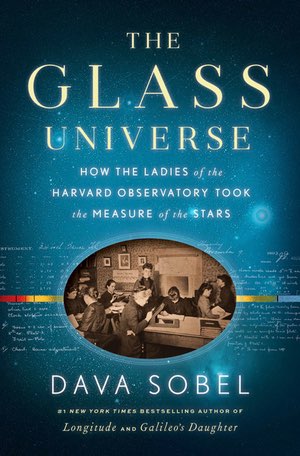Review: The Glass Universeby Jeff Foust
|
| These changes involving women in the field took place as astronomy itself, and the tools at the disposal of astronomers, changed. |
Before the women “computers” did their calculations at either JPL or Langley, though, were the women who worked at Harvard Observatory as far back as the late 19th century. These women performed calculations, measured star positions and spectra on photographic plates, and did other essential work to support the observatory’s astronomers. And in The Glass Universe, the new book by Dava Sobel, they get their long-overdue recognition.
Women were already working as computers at Harvard Observatory when the book begins in the early 1880s. Anna Palmer Draper, widow of astronomer Henry Draper, visits the observatory to discuss with its director, Edward Pickering, about continuing the research her late husband had been working on. That, over the next several decades, involves hiring more women, who take on greater roles and responsibilities, through the appointment of Cecilia Payne-Gaposchkin at the observatory’s first female director in the mid-1950s.
These changes took place while astronomy itself, and the tools at the disposal of astronomers, changed. At the beginning of the book, astronomers were starting to make greater use of photographic plates to take images, and also experimenting with the use of prisms to display the spectra of stars. Henry Draper had, at the time of his death, been able to combine the two: recording spectra on photographic plates, allowing for more detailed studies. His widow shared those plates with Harvard, followed by telescopes and significant funding, to continue that work.
| “The work of an astronomer is as dull as that of a book-keeper, which it closely resembles,” Pickering’s predecessor told a newspaper reporter. |
This allowed astronomers to move beyond simply recording the positions and magnitudes of stars to understanding their compositions, temperatures, and other physical details: the birth of what is now “astrophysics.” The women of Harvard Observatory played key roles in that work. Annie Jump Cannon developed a classification scheme for stars, based on work by other women astronomers there, that survives to this day. Henrietta Swan Levitt found a relationship between the period and luminosity of one class of variable stars, Cepheids, which allowed astronomers to measure the size of this galaxy and the distances to others.
The women “computers” at Harvard had long been known to historians and the astronomical community, many of whom had criticized the observatory’s leadership for assigning grunt work to them at low pay. Sobel defends the practice, arguing that both men and women engaged in astronomical research in that era were “willing slaves to routine,” be it at the telescope or doing calculations. (“The work of an astronomer is as dull as that of a book-keeper, which it closely resembles,” Pickering’s predecessor told a newspaper reporter.) Sobel praises Pickering for hiring more women and giving them more responsibility over time. What’s less clear from the book, though, is why Pickering was willing to do so, beyond the fact that there were already a couple women working in those roles when he took over the observatory: it was a practice not widely followed at other observatories.
The Glass Universe also pays tribute to a very physical monument to the work of Harvard astronomers and computers of that era: a collection of half a million photographic plates representing more than a century’s worth of astronomical observations before digital cameras took over. Those plates are gradually being digitized today, to make them widely available and to preserve them (Sobel, at the end of the book, mentions a broken water main at an observatory building early this year that flooded a basement containing tens of thousands of plates, requiring an emergency rescue and restoration process.) Those plates, still useful today, served as the foundation for astronomy research at Harvard more than a century ago, and created opportunities for women, from being human computers to scientists who used that data to help reveal the mysteries of the universe.
